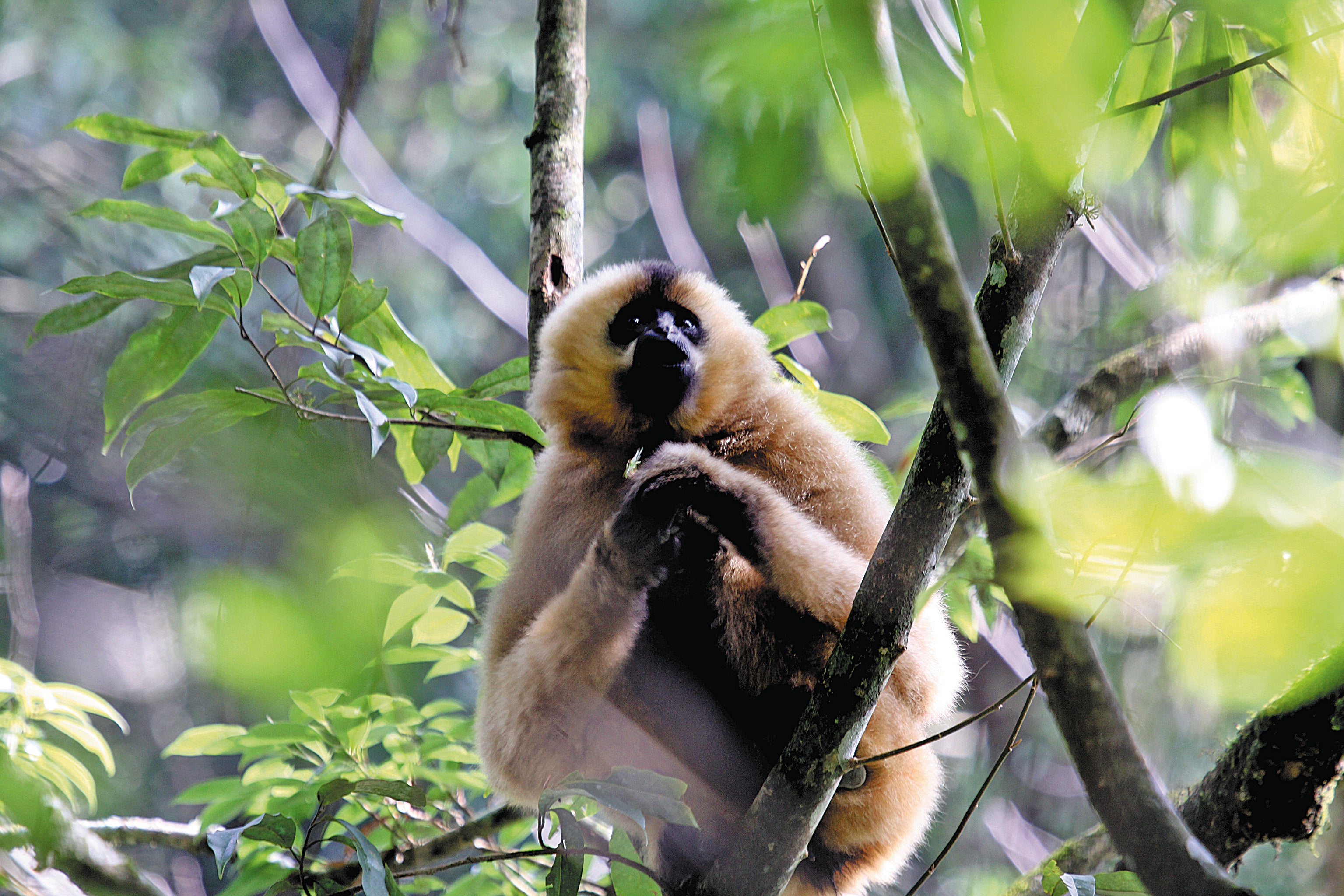Study aids efforts to protect gibbons
THE ARTICLES ON THESE PAGES ARE PRODUCED BY CHINA DAILY, WHICH TAKES SOLE RESPONSIBILITY FOR THE CONTENTS

A western black crested gibbon rests on a tree branch after searching for food in Xinping countyLi Guolin, a forest ranger in the Ailao Mountains in the southwestern province of Yunnan, takes care of many different plant species.
However, Li, 40, also looks after an endangered animal – the western black crested gibbon, a small primate named for the black fur on the crown of its head.
In recent decades, the loss of its habitat to the expansion of agriculture, illegal use of forest land and unlawful logging have led to a sharp decline in the ape’s numbers. The International Union for Conservation of Nature Red List of Threatened Species classifies the species as “critically endangered”, with a total population of 1,500.
Yunnan is the species’ sole habitat in China, and Xinping county is home to 124 groups, the largest number in the province, comprising 500 to 600 members in total.
Li’s base, the management office of the Ailao Mountain Nature Reserve in Xinping, has been making conservation efforts since the late 1980s. Those efforts have helped to promote a rise in the animal’s population in recent years.
Also, under the guidance of scientists, the forest rangers have successfully accustomed the gibbons to their presence through several years of day-to-day observations, rather than simply providing them with food, to encourage familiarity.
It is the first time the western black crested gibbon has been studied in this way anywhere in the world.
At the age of 29 in 2010, Li was selected as one of three young rangers responsible for patrol work at the Chamagudao station.
He starts his day at 6am by identifying the location of a group of gibbons and preparing to record their daily activities. He begins with their morning calls, which are important indicators that help locate the gibbons and assess the numbers of one or more groups.
“It’s a unique and highly accurate method of studying gibbons,” said Jiang Xuelong, a professor with the Kunming Institute of Zoology at the Chinese Academy of Sciences. Having studied mammal ecology and evolution for many years, Jiang said gibbons move very quickly in the forest, swinging from tree to tree.
“They spend their lives in the upper branches of the trees and seldom stay on the ground. That makes observation a challenge,” he said.
Physical fitness is crucial for the job, and the process of recording the animals’ movements scientifically is also demanding. The gibbons’ movements must be recorded every three minutes, Li said. The recording schedule usually only ends at about 7:30pm, when the animals make their final choice of a tree in which they will spend the night in safety.
Li successfully drew closer to the three gibbon groups at Chamagudao station. Now, the distance between him and the gibbons has shrunk from about 98ft to 6ft thanks to the day-to-day companionship.
“One day I was patrolling in the forest and a gibbon suddenly jumped to the ground and picked up some fruit that had fallen from a tree. It was just 6ft in front of me, but it didn’t run away. It just glanced at me and continued to eat the fruit. We stayed like that for about 10 minutes. I think it regarded me as another wild species.”
In 2013 Li witnessed a gibbon couple produce a youngster. “I named the father Xin and the mother Ping, and then gave the baby the name Xinping, the same pronunciation as the county’s name,” he said.
Xinping is now more than seven years old, close to sexual maturity. But it’s still hard to determine its gender, which can usually be easily recognised by the colour of the fur. However, the coats of western black crested gibbons change colour during their lives, Jiang said.
“Their fur is usually dark brown or black after birth, and it turns yellow at the age of two. A final change will come when they are eight years old. The fur of females remains yellow, and the males’ fur turns black.”
Previously published on Chinadaily.com.cn
Subscribe to Independent Premium to bookmark this article
Want to bookmark your favourite articles and stories to read or reference later? Start your Independent Premium subscription today.